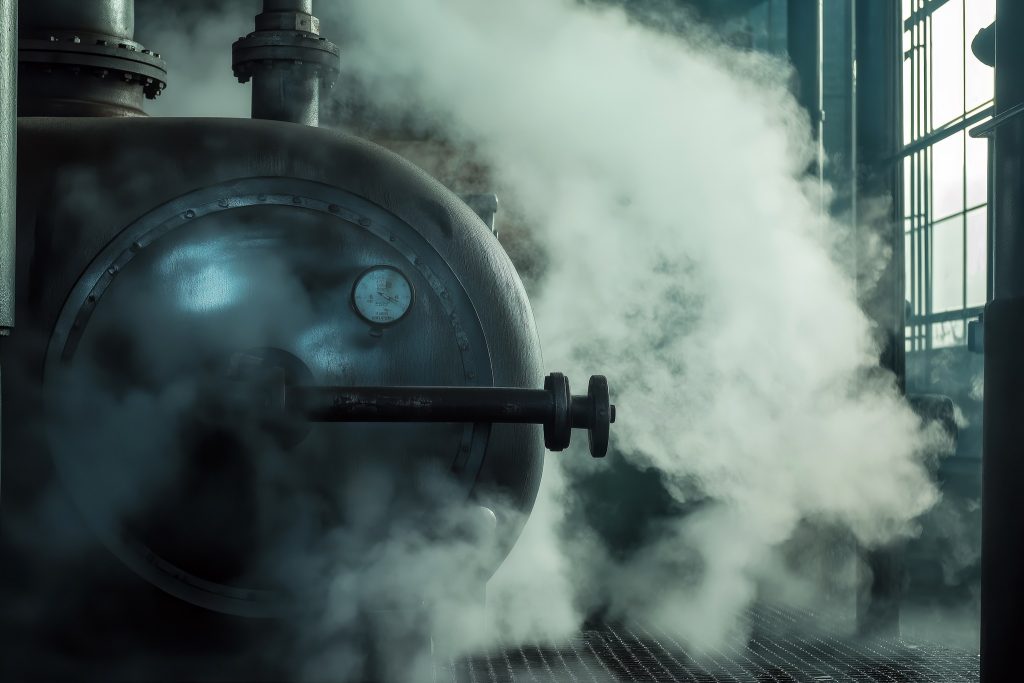Introduction
Welcome to the training session on the daily procedure of steam boiler blowdowns to remove sludge. Regular blowdowns are essential for maintaining boiler efficiency and preventing scale formation. In this guide, we will discuss the step-by-step process, the frequency, and the volume of blowdowns based on trends in Total Dissolved Solids (TDS) readings.
Importance of Blowdowns
Blowdowns help to remove sludge and concentrated impurities that settle at the bottom of the boiler. This prevents scaling, corrosion, and ensures efficient heat transfer. Maintaining optimal TDS levels is crucial for the longevity and performance of the boiler.
Components and Tools Required
- Blowdown Valves: Installed at the bottom of the boiler.
- TDS Meter: For measuring the concentration of dissolved solids in the boiler water.
- Safety Gear: Gloves, goggles, and protective clothing.
- Logbook: To record blowdown data and TDS readings.
Step-by-Step Procedure
- Preparation:
- Put on all necessary safety gear.
- Ensure the blowdown valves are in good working condition.
- TDS Measurement:
- Use the TDS meter to measure the current TDS level in the boiler water.
- Record the TDS reading in the logbook.
- Initiate Blowdown:
- Open the blowdown valve slowly to avoid sudden pressure changes.
- Allow a steady stream of water to flow, carrying sludge and impurities out of the boiler.
- Monitor the Process:
- Continuously monitor the blowdown process to ensure it is effective.
- If necessary, adjust the valve to control the flow rate.
- Complete the Blowdown:
- Once the desired volume of water has been discharged, close the blowdown valve slowly.
- Measure the TDS level again to ensure it is within the acceptable range.
- Record the final TDS reading and the volume of water discharged in the logbook.
Frequency and Volume of Blowdowns
The frequency and volume of blowdowns should be based on the trend of TDS readings:
- High TDS Levels: If TDS levels are consistently high, increase the frequency and volume of blowdowns. This helps in removing more impurities and maintaining optimal water quality.
- Stable TDS Levels: If TDS levels are stable and within the acceptable range, maintain a regular blowdown schedule (e.g., once daily) with a moderate volume of water discharge.
- Low TDS Levels: If TDS levels are low, reduce the frequency and volume of blowdowns to avoid excessive water and heat loss.
Important Notes
- Safety First: Always follow safety guidelines and wear appropriate protective gear.
- Regular Monitoring: Keep a close eye on TDS levels and adjust blowdown procedures as needed.
- Documentation: Maintain accurate records of TDS readings and blowdown activities for future reference and trend analysis.
- Training: Ensure all operators are trained on the blowdown procedure and understand the importance of maintaining optimal TDS levels.
Conclusion
Daily steam boiler blowdowns are a critical aspect of boiler maintenance, ensuring the removal of sludge and impurities to maintain efficient operation. By monitoring TDS levels and adjusting blowdown frequency and volume accordingly, you can ensure the longevity and performance of your boiler system. Feel free to reach out with any questions or request further clarification on any steps. Happy maintaining!

